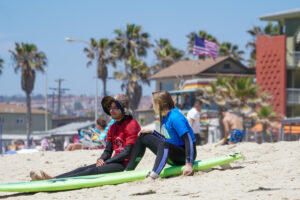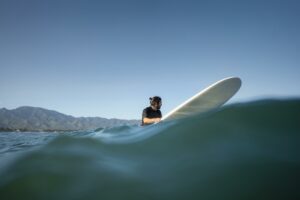Surfboards not only come in different shapes, sizes and splashes of colors, but also have fantastic names like thruster, malibu, funboard, fish board– yep, those names are real. Do you know any surfboard design by name? Can you tell which is which and what it is used for? Well, now’s the time to find out all about the differences and similarities between basic types of surfboards, and which are popular with beginner surfers!
Shortboard (Thruster)
This is by far the most popular surfboard design. It first appeared the 1970s and reshaped the way we see high performance surfing. With a solid rocker, it’s great for quick maneuvers. Surfers love to use it on particularly steep waves. Its signature sign is the pointed nose, along with thin rails. The size of a thruster can vary from 5’8” to 6’10”.
Longboard (Malibu, Mal)
The longboard is pretty much the oldest surfboard design, although undeservedly less popular than the shortboard. Unlike the thruster, longboard has a rounded nose. Other differences lie in the fins – while the shortboard may have up to three fins, malibus typically have only one fin. Despite appearances, malibus are great for beginners – they are relatively easy to stand on and allow the beginner surfer to learn paddling techniques and turning basics easily.
Funboard (Mini Mal)
Funboard is the subtype of the longboard, with size being the crucial difference. While malibus are 9′ long, mini mals’ length varies from 7’2” to 9’. Just like malibus, funboards are excellent for beginners. Beginners even prefer a funboard as it is easier to maneuver than a malibu. Funboards come really handy for those who don’t want to put too much effort into catching the wave. For everyone who thinks they are overweight and don’t want to have a go at surfing, mini mal is here to prove them wrong.
Fish Board
Fish board is basically a shortboard, only shorter – anywhere between 4’8” and 6’0′! It’s also wider and appears more round than the shortboard because of the expansion in the width. Naturally, it has a pointed nose. It’s popular with beginners because it’s easy to balance. One of the popular surfing misconceptions is that the fish board is ideal for beginners. Although it’s good, many would say that the malibu is a better choice. The thing is, the ideal surfboard length is around 9’ and malibu is definitely closer to the perfect length. Plus, it’s also stable.
Gun
The opposite from fish boards, gun board is a longer version of the shortboard. Depending on the design and purpose, it can be as long as 12’ and it’s fantastic for paddling against huge waves.
Pop-out
Unlike surfboards that are made from scratch, pop-outs are made on an assembly line. Since they are mass-produced, they are cheaper than custom-made surfboards. Nevertheless, they are great for beginners – their thick fiberglass cover makes them sturdy and reliable to stand on.
Hybrid
There are designs that are actually a blend of two surfboard design styles, for example, a combination of longboard and surfboard designs. They are full-blown custom boards that can accommodate the specific needs of their owners.
SUP
The Stand Up Paddleboard, as the name says, is used for paddling while standing. It’s rather large, with its size ranging from 10’ to 12’. Surfers use it on both small and bigger waves, but it’s excellent for just cruising and admiring the scenery. You would still need to work on your balance skills, though!
Learn more about Surfboards in Surf Classes in Pacific Beach
Want to find out more about surfboards? Or do you want to try and see if surfing is your thing before buying a surfboard? Pacific Surf School is your friendly and professional surf school in San Diego. We provide quality instruction and exceptional surf classes in Pacific Beach. You don’t need to have a surfboard to surf with us – we will provide you with a board to use in lessons and will also teach you everything you need to know about surfboards and surfing. Are you game? We’re waiting for you at the lovely Pacific Beach!




